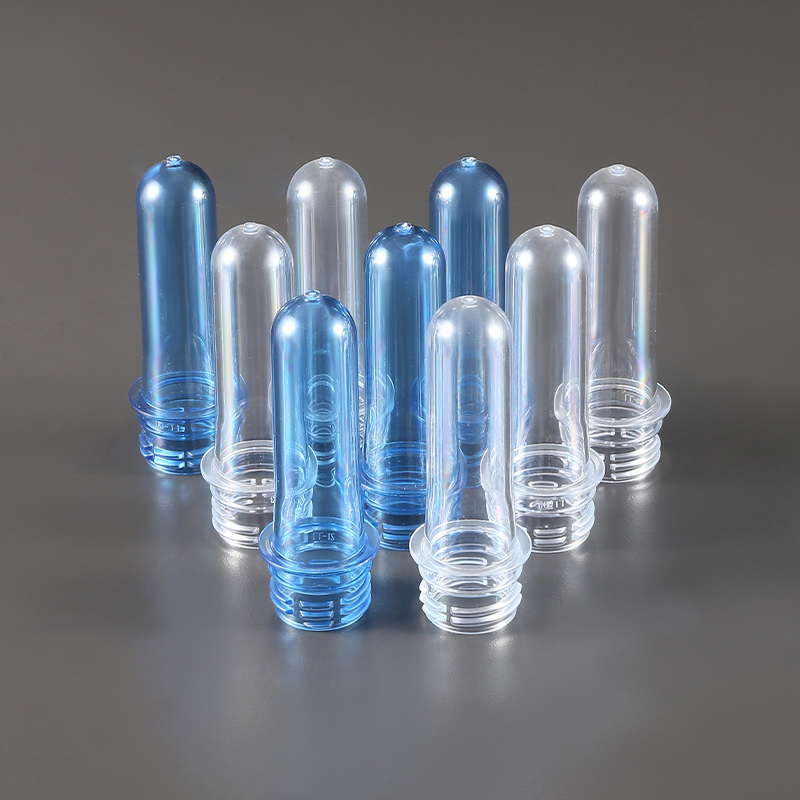One of the key properties of 45mm PET preforms that directly influences the efficiency of the bottle manufacturing process is their ductility. Ductility refers to the ability of a material to undergo significant plastic deformation before breaking, typically measured by how much a material can stretch or elongate under stress. For 45mm PET preforms, ductility plays a critical role in shaping and molding the preform into a bottle.

Ductility is a material's ability to deform under tensile stress. In the context of PET preforms, ductility refers to how easily the preform can be stretched and reshaped during the blow molding process, which is the key method used to turn preforms into bottles.
During the blow molding process, PET preforms are heated to a specific temperature, making the plastic soft and pliable. The preforms are then inflated within a mold to take on the desired bottle shape. If the material lacks ductility, it may break, crack, or fail to mold properly during this process. On the other hand, high ductility ensures that the preform can undergo the necessary deformation to form bottles with consistent wall thickness and structural integrity.
The blow molding process is one of the common techniques used to create PET bottles. This process involves heating the PET preform to a temperature where it becomes soft and moldable. The heated preform is then placed in a mold and air is injected to inflate it into the shape of a bottle.
The level of ductility in the 45mm PET preform is crucial during this process for several reasons:
a) Uniform Wall Thickness:
Ductility helps in achieving a uniform wall thickness during molding. If the preform is too brittle or lacks adequate ductility, certain parts of the bottle may become thinner than others, compromising its structural integrity. Ductility allows the material to stretch evenly, resulting in bottles with consistent thickness and enhanced strength.
b) Reduced Risk of Cracking or Deformation:
A preform with sufficient ductility reduces the likelihood of cracking or failing during the molding process. Since PET is a thermoplastic material, it becomes more pliable when heated. When it reaches its ductility range, the material can stretch without breaking, which is vital to producing high-quality PET bottles.
c) Flexibility in Design:
High ductility also allows manufacturers to experiment with various bottle shapes and sizes. Bottles with intricate designs, such as curves or tight corners, require greater flexibility during the molding process. A high-ductility PET preform makes it possible to create complex bottle designs without compromising the material's structural properties.
Several factors influence the ductility of PET preforms, including the material composition, processing conditions, and environmental factors. Understanding these factors is essential for optimizing the preform production process and ensuring high-quality bottles.
a) Material Composition:
The specific blend of PET used in making the preforms can significantly affect their ductility. PET's ductility is influenced by the molecular weight, crystallinity, and the presence of additives or fillers. A higher molecular weight typically results in better ductility, as the longer polymer chains provide more flexibility. Additives, such as plasticizers, can also be included to enhance ductility, especially in applications where flexibility is critical.
b) Processing Temperature:
During the injection molding of PET preforms, the temperature at which the material is processed plays a key role in its ductility. If the preform is too hot or too cold when molded, it may not exhibit the required ductility. A precise temperature control ensures that the preform achieves the ideal balance between stiffness and flexibility.


 English
English Español
Español 中文简体
中文简体